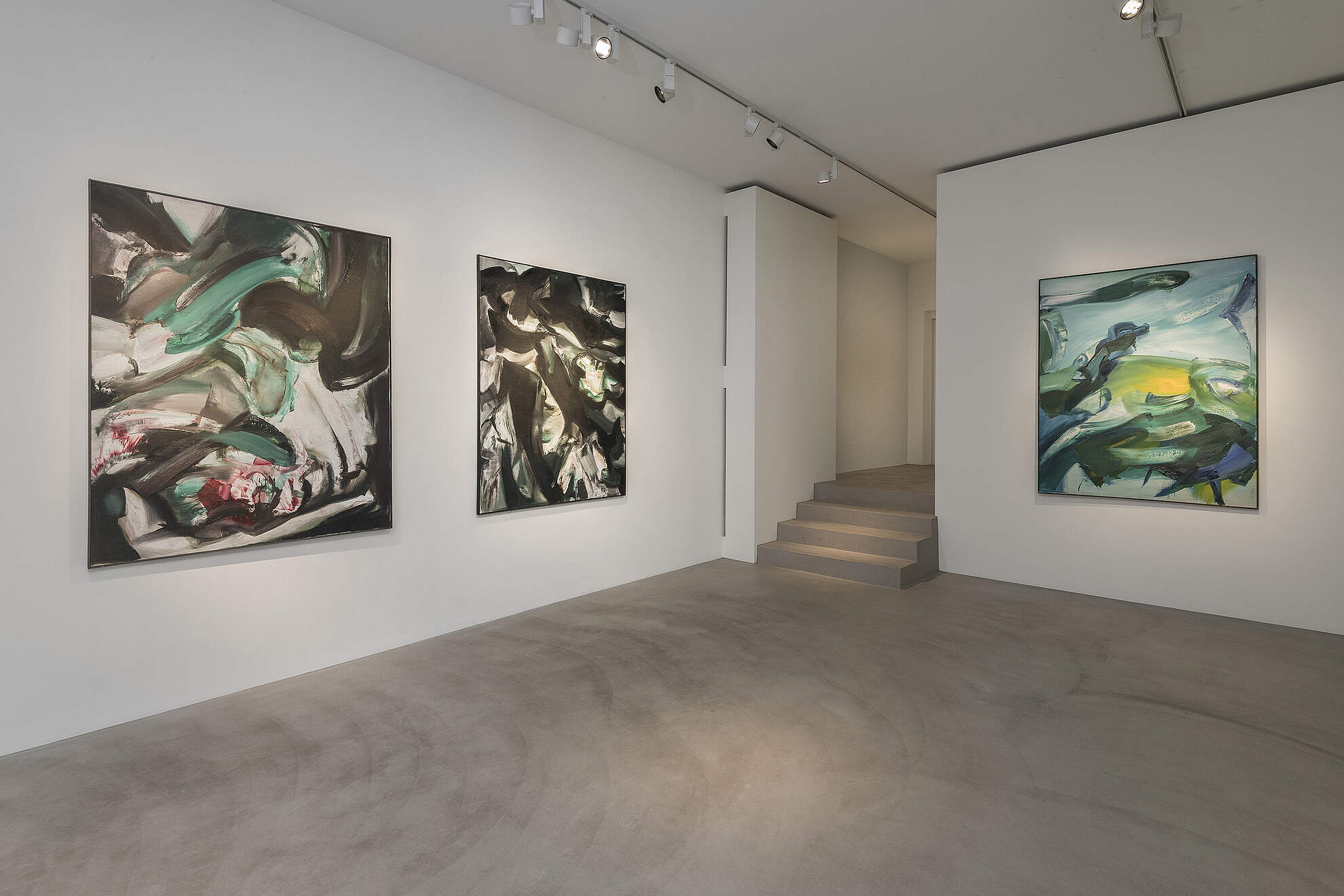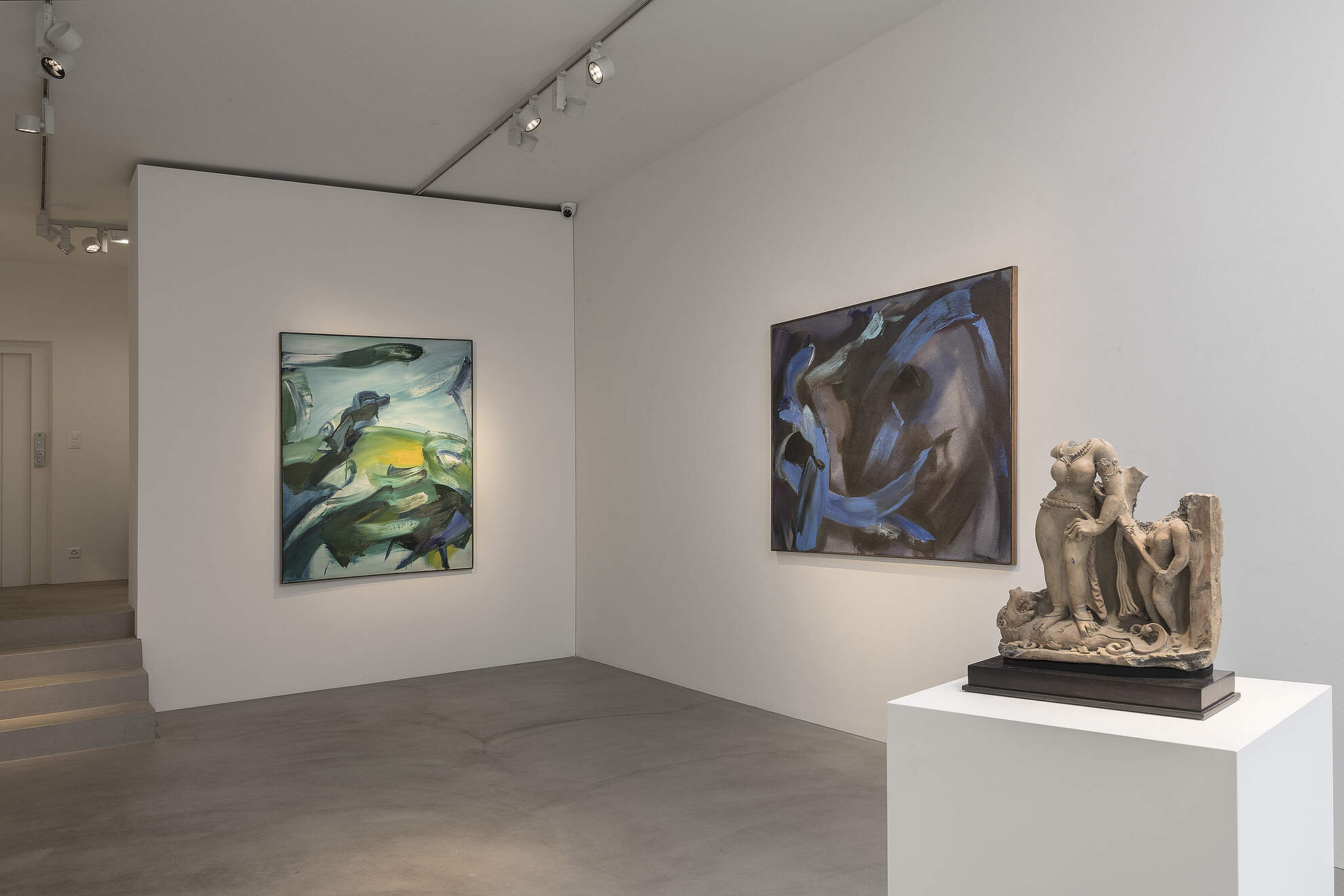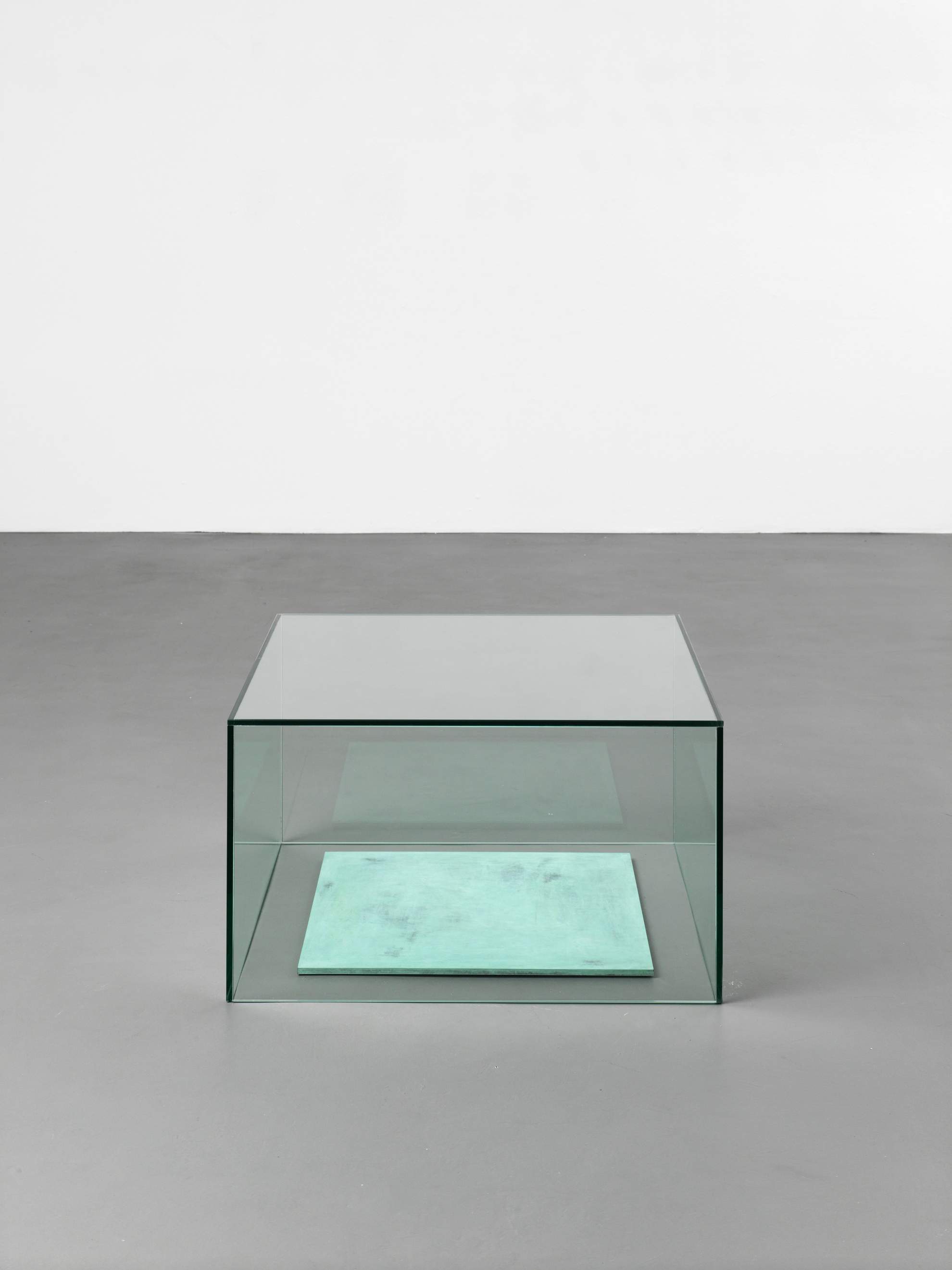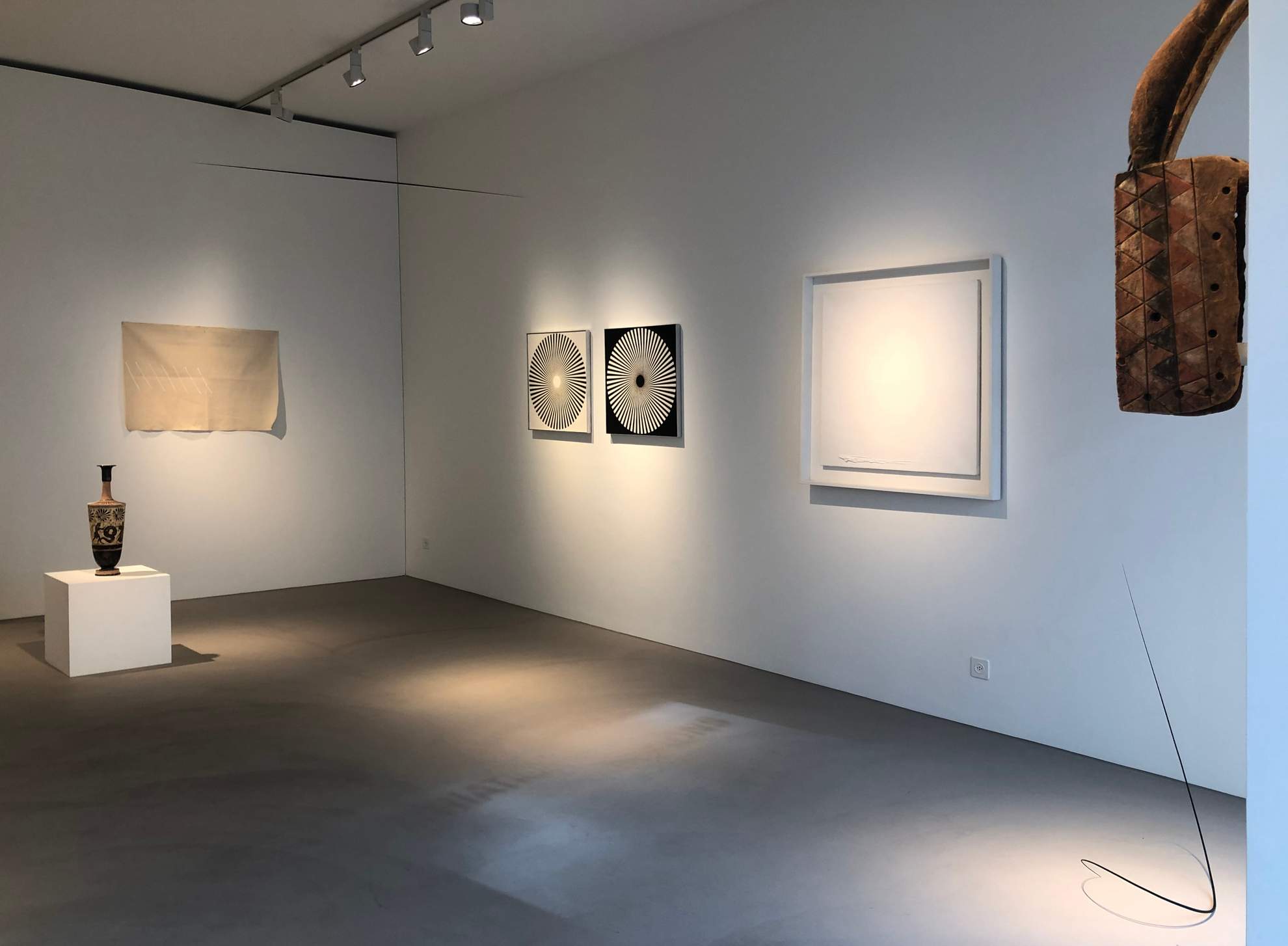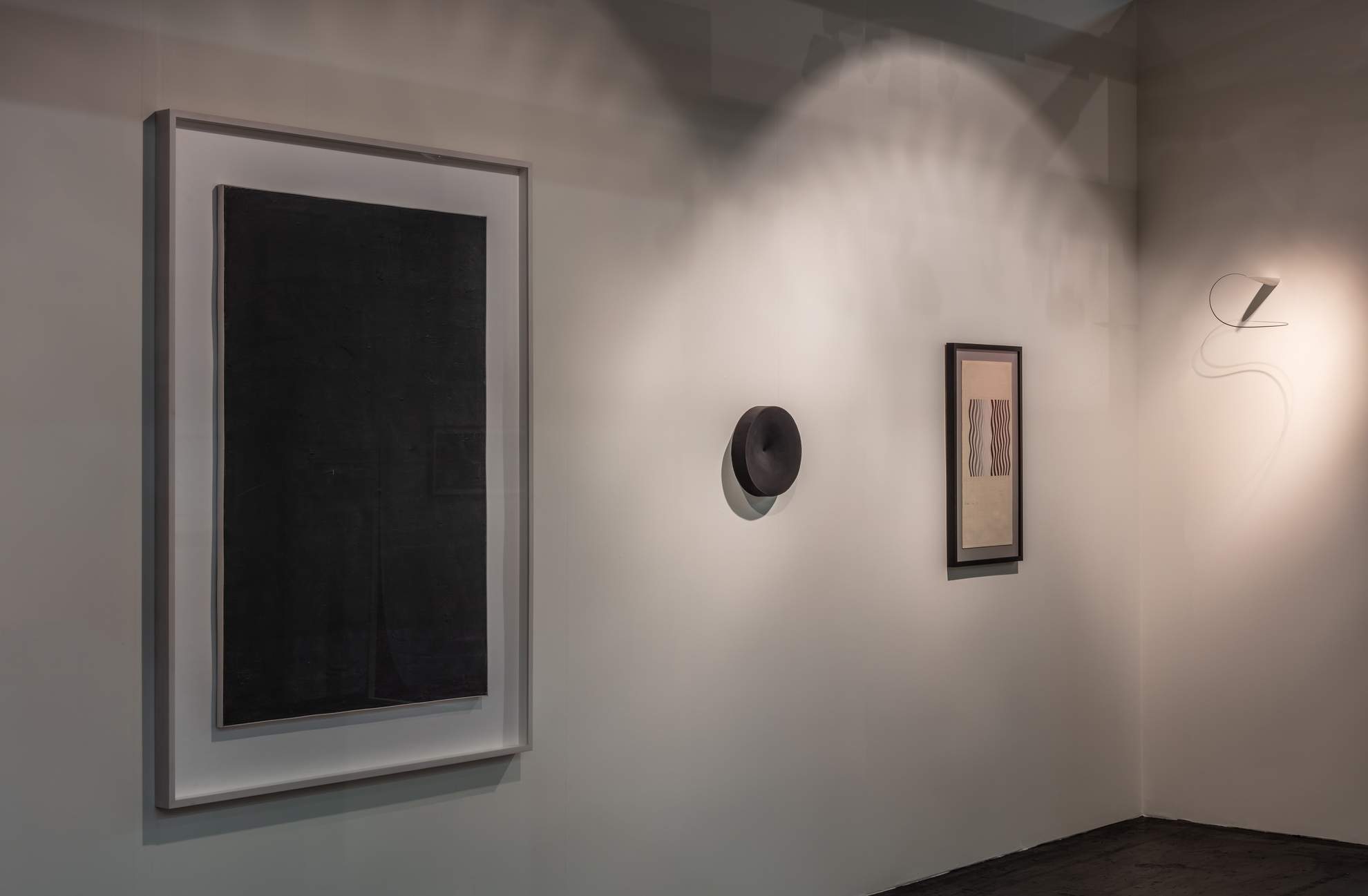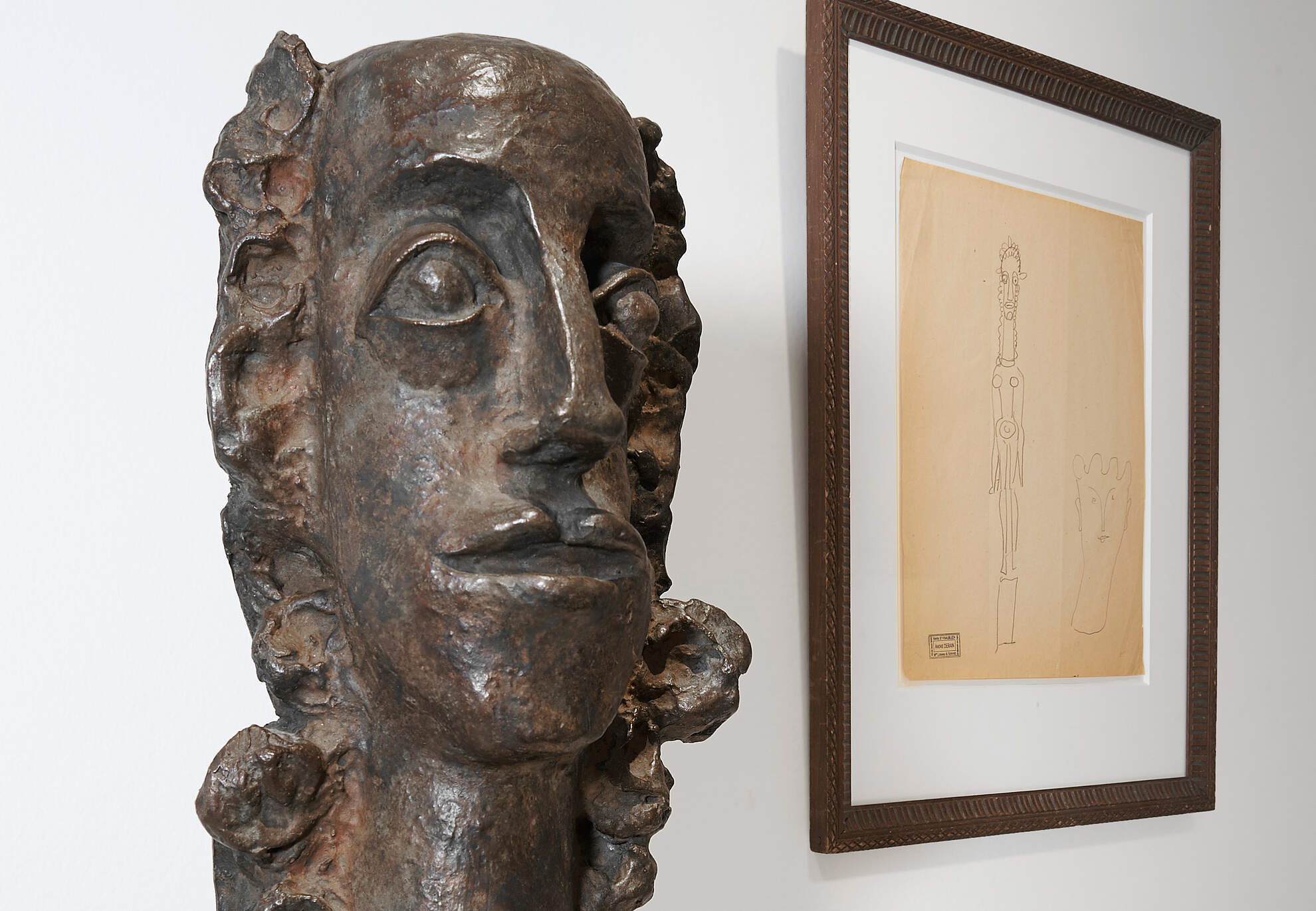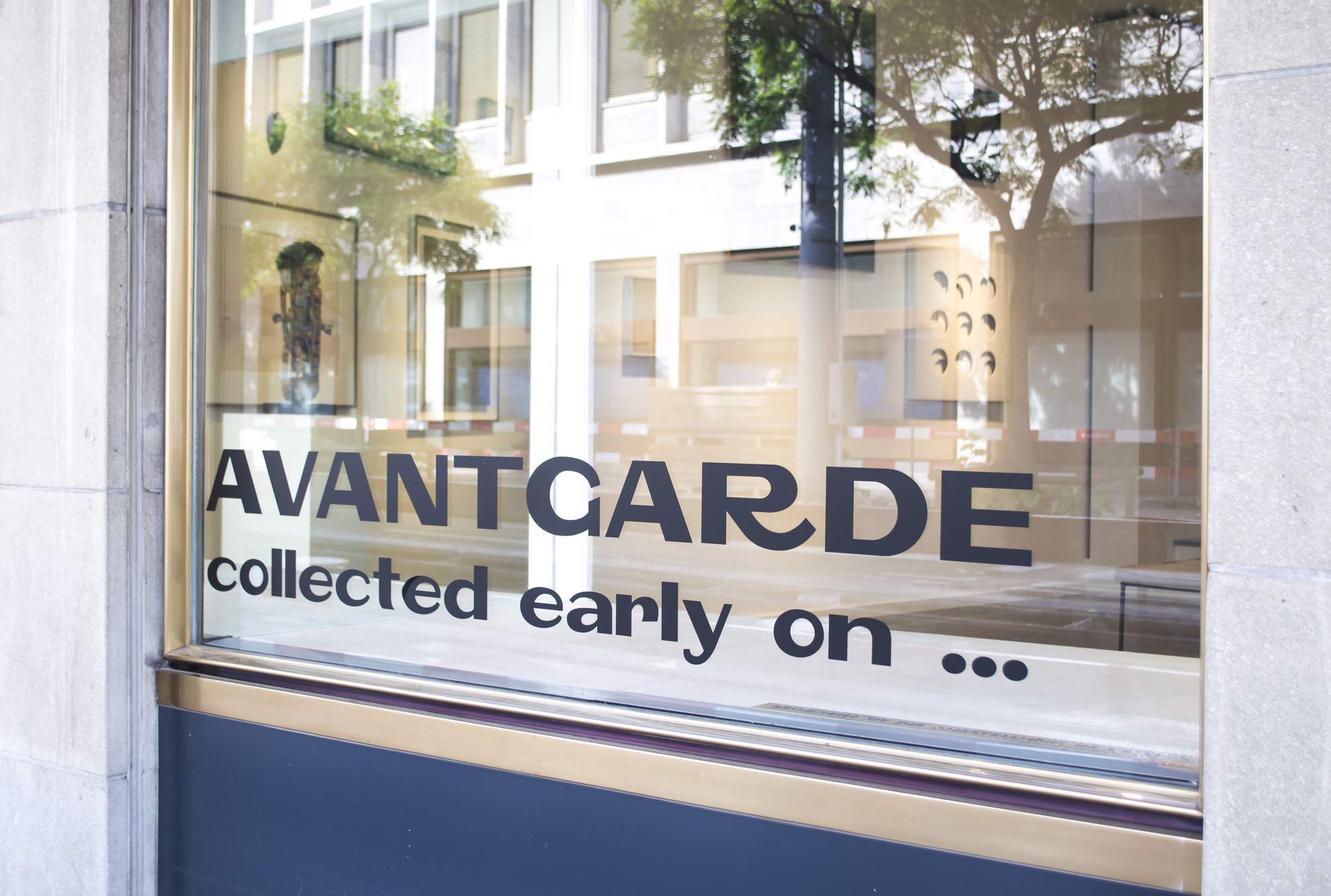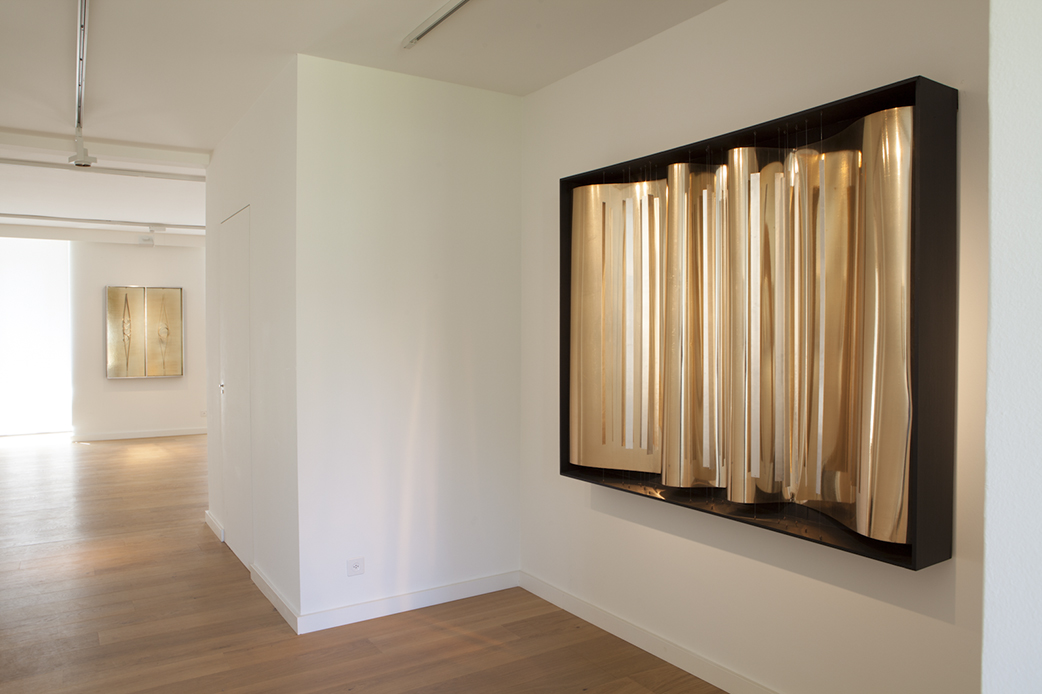
Englebert van Anderlecht
A Pioneer of the European Avant–Garde
through November 2025
Galerie Dierking’s exhibition is dedicated to the long-overlooked Belgian artist van Anderlecht (1918-1961), and pays tribute to his significant contribution to the European Avant-Garde.
Passion and instincts lead to crime
– and to my painting.
Englebert van Anderlecht, February 1959
Van Anderlecht’s late work represents the culmination of a unique and intense artistic journey. Due to his untimely death at the age of just 42, the artist left behind a relatively modest oeuvre. While his early paintings reflect the influence of Cézanne, Matisse, and Braque, from 1957 onward - within the span of merely four years - he developed a distinctive style defined by gestural abstraction. These works, characterized by vigorous forms and bold brushwork - later applied with rags in place of traditional brushes - exhibit notable affinities with Franz Kline. A reduced palette, intermittently interrupted by striking bursts of color, plays a central role in his work. Resonances with the work of Willem de Kooning and Jackson Pollock are likewise perceptible.
Nevertheless, van Anderlecht resists straightforward classification as an Abstract Expressionist or Action Painter. His deliberate choice of color and dynamic, yet controlled, application of paint distinguishes his practice from the impetuous gestures of his American contemporaries, as well as from the gestural abstraction characteristic of Tachisme and Art Informel found in the work of artists like Georges Mathieu. Instead, van Anderlecht heightens the tension in his large-format paintings to a remarkable degree, achieving a distinctive and powerful visual language.
By the late 1950s, during an exhibition at the Palais des Beaux-Arts in 1959, critics such as Jean Dypréau and Philippe d’Arschot noted that van Anderlecht exercised deliberate control over his streams of colour - distinguishing his approach from the automatism characteristic of Art Informel and Tachisme.
Especially significant is the concept of Peinture Partagée - a form of divided painting that van Anderlecht initially developed in collaboration with the literary figure Jean Dypréau, and later expanded upon with his close friend and fellow painter Jef Verheyen (1932–1984). From 1960, the year they co-founded the Nieuwe Vlaamse School, the two artists produced a series of collaborative works under the title Ni l’un ni l’autre, one of which is shown at Galerie Dierking curated exhibition. Through this collaboration, van Anderlecht and Verheyen revitalized the dialogue between color and gesture on canvas, creating a shared artistic space that challenged conventional boundaries between individual expression and collective creativity.
The works by Englebert van Anderlecht exhibited reflect a compelling artistic evolution - characterized by a dynamic engagement with the entire pictorial surface, through deliberately placed accents and a bold use of color that was strikingly ahead of its time. These paintings offer a unique visual experience and are not only an outstanding example of the Belgian Avant-Garde, but also of Flemish Modernism.
By highlighting the work of van Anderlecht, Galerie Dierking aims to draw attention to the importance of this underrecognized artist and to underscore the impact of the Belgian Avant-Garde within the international art context.
The artworks of van Anderlecht provide an insightful perspective into the late 1950s - a formative period during which he was active in Antwerp alongside Jef Verheyen and other members of the Avant-Garde collective G58. These years marked a decisive shift in the European art landscape, as Paris began to lose its dominance and cities like Brussels and Antwerp emerged as influential centers of artistic innovation.
Alongside paintings by Englebert van Anderlecht, works on canvas by the Flemish artist Jef Verheyen are on view at Galerie Dierking. These artistic stances reflect the pioneering spirit of the era and represent distinct artistic positions within the European context of the time. Their juxtaposition and contextualization reveal a shared artistic vision - one in which both painters, while united by similar ideas, pursued independent and individual forms of artistic expression.
Noëmi Bechtiger
Englebert van Anderlecht
A Pioneer of the European Avant–Garde
through November 2025
Passion and instincts lead to crime
– and to my painting.
Englebert van Anderlecht, February 1959
Galerie Dierking’s exhibition is dedicated to the long-overlooked Belgian artist van Anderlecht (1918-1961), and pays tribute to his significant contribution to the European Avant-Garde.
Van Anderlecht’s late work represents the culmination of a unique and intense artistic journey. Due to his untimely death at the age of just 42, the artist left behind a relatively modest oeuvre. While his early paintings reflect the influence of Cézanne, Matisse, and Braque, from 1957 onward - within the span of merely four years - he developed a distinctive style defined by gestural abstraction. These works, characterized by vigorous forms and bold brushwork - later applied with rags in place of traditional brushes - exhibit notable affinities with Franz Kline. A reduced palette, intermittently interrupted by striking bursts of color, plays a central role in his work. Resonances with the work of Willem de Kooning and Jackson Pollock are likewise perceptible.
Nevertheless, van Anderlecht resists straightforward classification as an Abstract Expressionist or Action Painter. His deliberate choice of color and dynamic, yet controlled, application of paint distinguishes his practice from the impetuous gestures of his American contemporaries, as well as from the gestural abstraction characteristic of Tachisme and Art Informel found in the work of artists like Georges Mathieu. Instead, van Anderlecht heightens the tension in his large-format paintings to a remarkable degree, achieving a distinctive and powerful visual language.
By the late 1950s, during an exhibition at the Palais des Beaux-Arts in 1959, critics such as Jean Dypréau and Philippe d’Arschot noted that van Anderlecht exercised deliberate control over his streams of colour - distinguishing his approach from the automatism characteristic of Art Informel and Tachisme.
Especially significant is the concept of Peinture Partagée - a form of divided painting that van Anderlecht initially developed in collaboration with the literary figure Jean Dypréau, and later expanded upon with his close friend and fellow painter Jef Verheyen (1932–1984). From 1960, the year they co-founded the Nieuwe Vlaamse School, the two artists produced a series of collaborative works under the title Ni l’un ni l’autre, one of which is shown at Galerie Dierking curated exhibition. Through this collaboration, van Anderlecht and Verheyen revitalized the dialogue between color and gesture on canvas, creating a shared artistic space that challenged conventional boundaries between individual expression and collective creativity.
The works by Englebert van Anderlecht exhibited reflect a compelling artistic evolution - characterized by a dynamic engagement with the entire pictorial surface, through deliberately placed accents and a bold use of color that was strikingly ahead of its time. These paintings offer a unique visual experience and are not only an outstanding example of the Belgian Avant-Garde, but also of Flemish Modernism.
By highlighting the work of van Anderlecht, Galerie Dierking aims to draw attention to the importance of this underrecognized artist and to underscore the impact of the Belgian Avant-Garde within the international art context.
The artworks of van Anderlecht provide an insightful perspective into the late 1950s - a formative period during which he was active in Antwerp alongside Jef Verheyen and other members of the Avant-Garde collective G58. These years marked a decisive shift in the European art landscape, as Paris began to lose its dominance and cities like Brussels and Antwerp emerged as influential centers of artistic innovation.
Alongside paintings by Englebert van Anderlecht, works on canvas by the Flemish artist Jef Verheyen are on view at Galerie Dierking. These artistic stances reflect the pioneering spirit of the era and represent distinct artistic positions within the European context of the time. Their juxtaposition and contextualization reveal a shared artistic vision - one in which both painters, while united by similar ideas, pursued independent and individual forms of artistic expression.
Noëmi Bechtiger
ARCHIVE
21. Dec 2022 -

GANESHA & HIS HEAVENLY FRIENDS
13. Jun -

GE-MEN-GE-LA-GE | Africa, Bischoffshausen, Boll, Fontana, Goepfert, Girke, Kricke, Prantl, Rainer, South America, Verheyen
01. Feb -

West Africa | Rare, Unfamiliar, Masterful






GANESHA & HIS HEAVENLY FRIENDS
MASTERPIECES OF THE PICCUS COLLECTION, SAN FRANCISCO – BOLL | KESSELMAR | LÖHR - NEW WORKS








IMPRINT
© DIERKING 2025

